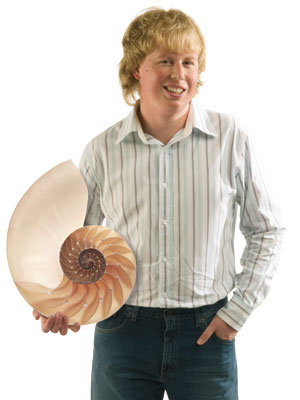
 Andrew Haines
Andrew Haines
Graduate
Mathematics
It was a science fiction novel Andrew Haines read at high school that first sparked his interest in nanotechnology, a new and cutting-edge scientific discipline that involves the engineering of materials and products at the molecular level.
What was science fiction is fast becoming a reality, however, both for the world of science and for Andrew, who has been awarded the prestigious and lucrative Woolf-Fisher scholarship to study his PhD with the NanoPhotonics group at Cambridge University.
It's a field that made headlines recently, when a group of scientists from Berkeley announced that they had created a revolutionary nano-scale structure that could reverse the direction of light, raising multiple possibilities, including “invisibility cloaks” not unlike something out of Harry Potter.
“It's a new field, and there is certainly significant potential for some very interesting discoveries in it,” Andrew says. “There is also potential for a lot of collaboration between different groups, which is one of the things that makes it really exciting. It has applications for virtually anything.”
Andrew recently graduated with an Honours degree in Mathematics and Physics. He says he has “thoroughly enjoyed the Otago lifestyle”, and believes that getting involved in a lot of the extracurricular activities offered on campus was an important factor in receiving his Cambridge scholarship.
He has been a regular volunteer at the “Hands-On Science” Summer Science School for high school students, and has served on committees for both the debating society and the squash club at Otago.
In fact, Andrew's squash game has been one of the early beneficiaries of nanotechnology. “My new squash racket contains nano-fibres that make it very light and very strong,” he explains. So where else will this technology make its mark in the future? That will not be up to the sci-fi writers, but to scientists like Andrew.